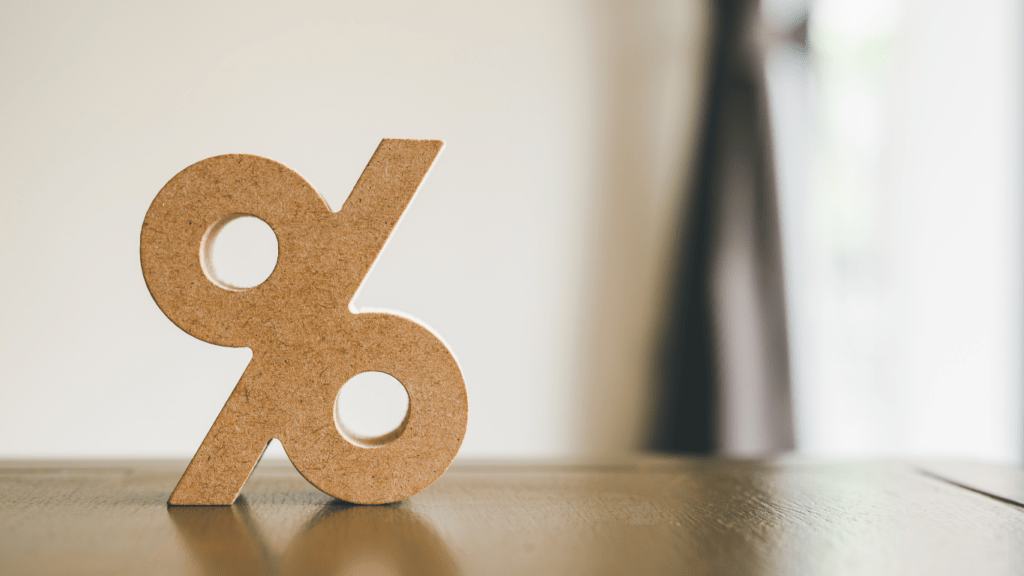Real estate markets are a dynamic ecosystem, constantly shifting through phases of boom, bust, and recovery. As someone deeply entrenched in the world of real estate, I’ve witnessed firsthand the cyclical nature of this industry.
Understanding these cycles is not just beneficial but essential for anyone looking to navigate the complexities of the real estate market successfully. From the exhilarating highs of a booming market to the challenging lows of a bust, each phase brings its unique set of opportunities and risks.
By delving into the intricacies of real estate cycles, I’ve gained valuable insights that have shaped my approach to investing and decision-making in this ever-evolving landscape. Join me as we explore the nuances of real estate cycles, decipher the signs of change, and uncover strategies to thrive in any market condition.
Exploring Real Estate Cycles
Real estate cycles are essential to comprehend as they dictate market trends and investment strategies. Understanding the various phases, from boom to bust and recovery, is crucial for making informed decisions in real estate.
Definition and Characteristics
Real estate cycles are recurring patterns of growth, decline, and stabilization in the real estate market. These cycles are influenced by factors such as supply and demand, economic conditions, and investor sentiment. Characteristics include fluctuating prices, changing inventory levels, and shifts in buyer behavior.
Importance in the Real Estate Market
Recognizing real estate cycles is vital for investors, developers, and buyers. By understanding these cycles, individuals can anticipate market changes, mitigate risks, and capitalize on opportunities that arise during different phases. Adaptability to market cycles is key to long-term success in real estate investments.
The Boom Phase
Real estate boom phases are marked by significant growth in property prices, high demand, and increased construction activity. During these periods, the market experiences rapid expansion, leading to soaring property values and robust investor interest.
Characteristics of a Real Estate Boom
- Price Surge: Property prices escalate sharply, outpacing inflation rates.
- High Demand: There’s a surge in buyer demand driven by various factors like low-interest rates and positive market sentiment.
- Increased Development: Construction of new properties increases to meet the rising demand, contributing to economic growth.
- Speculative Investing: Speculators enter the market to capitalize on the upward trend, further driving prices.
- Seller’s Market: Limited inventory leads to competition among buyers, tilting the advantage towards sellers.
- Economic Growth: A strong economy with low unemployment rates and high consumer confidence fuels demand for real estate.
- Low Interest Rates: Reduced borrowing costs make mortgages more affordable, increasing homebuyers’ purchasing power.
- Population Growth: Influx of residents in an area stimulates the housing market, driving up property prices.
- Investor Sentiment: Positive investor outlook and optimism in the market attract more investment, boosting demand.
- Government Policies: Supportive policies such as tax incentives or infrastructure development can spur real estate activity during a boom.
The Bust Phase
Exploring the Bust Phase in real estate cycles unveils a crucial period marked by declining property values, reduced demand, and a slowdown in construction activity. During this phase, market corrections occur, leading to price adjustments as the market strives to find a new equilibrium.
It’s essential to grasp the dynamics of the Bust Phase to navigate its challenges effectively and make informed decisions.
- Price Decline: Experiencing a decline in property prices, sometimes drastically, characterizes the Bust Phase. Sellers may face difficulties in fetching prices previously achievable during the boom, impacting their profitability and investment returns.
- Decreased Demand: A key feature of the Bust Phase is dwindling demand for real estate properties. Buyers may adopt a cautious approach, waiting for further price adjustments or economic stability before making significant investments.
- Stagnant Construction: The construction sector often experiences a slowdown during the Bust Phase. Developers may postpone or halt new projects due to reduced demand and uncertainty in the market, affecting employment and economic activity in the industry.
- Market Corrections: Market corrections play a vital role in restoring balance during the Bust Phase. Adjustments in property prices and demand levels help realign the market fundamentals and set the stage for a potential recovery in the future.
Understanding the nuances of the Bust Phase equips investors, developers, and buyers with the knowledge to navigate through challenging times in the real estate market. By recognizing the signs and implications of this phase, stakeholders can adapt their strategies, identify opportunities, and position themselves resiliently for the eventual recovery and the next phase in the real estate cycle.
The Recovery Phase
Entering the recovery phase of a real estate cycle signifies a period of gradual improvement following the bust phase. During this phase, market conditions begin to stabilize, indicating a shift towards a more balanced and sustainable real estate landscape.
The recovery phase is characterized by several key indicators that signal positive momentum within the market, presenting opportunities for investors, developers, and buyers alike.
- Market Stabilization: Market stabilization is a crucial aspect of the recovery phase, marked by a slowdown in price declines and a reduction in excessive fluctuations. Stabilization indicates a gradual restoration of equilibrium within the market, setting the stage for more predictable and less volatile conditions.
- Increased Buyer Confidence: As market conditions improve, buyer confidence tends to increase during the recovery phase. Positive signals such as stabilized prices, improved economic outlook, and favorable lending conditions contribute to a resurgence in buyer interest, driving demand for real estate properties.
- Renewed Investment Activity: The recovery phase often witnesses a revival in investment activity as stakeholders regain confidence in the market’s potential for growth. Investors may seize opportunities presented by undervalued properties or emerging market segments, fueling a resurgence in development projects and transactions.
- Moderate Price Appreciation: While price appreciation may still be subdued compared to the boom phase, the recovery period typically sees a gradual uptick in property values. Moderate price appreciation reflects a balanced market environment, where supply and demand dynamics begin to align more effectively.
- Emergence of Opportunities: As the market stabilizes and confidence grows, opportunities for strategic investments and acquisitions become more prevalent during the recovery phase. Savvy investors can capitalize on undervalued assets, emerging trends, and shifting market dynamics to position themselves for long-term success.
Navigating the recovery phase requires a keen understanding of market trends, economic indicators, and consumer behavior. By recognizing the signs and characteristics of this phase, stakeholders can make informed decisions, optimize their portfolios, and capitalize on the evolving real estate landscape. Adapting to the changing dynamics of the recovery phase is essential for leveraging opportunities, mitigating risks, and positioning oneself for sustainable growth in the post-bust market environment.
Implications for Real Estate Investors
In the realm of real estate investment, comprehending the cyclicality of markets is paramount. By understanding the implications of boom, bust, and recovery phases, investors can strategize effectively to maximize returns and mitigate risks.
Let’s delve into the key takeaways for real estate investors within each phase:
Boom Phase Implications:
- Strategic Investments: During the boom phase, it’s crucial for investors to exercise caution and conduct thorough due diligence. While the market may appear lucrative with rising prices and high demand, prudent investment decisions are essential to avoid speculative bubbles that could lead to potential losses.
- Portfolio Diversification: As property prices surge and demand escalates, diversifying investment portfolios becomes imperative. Balancing risk across different market segments and asset classes can help investors hedge against potential downturns during the subsequent bust phase.
- Monitoring Market Indicators: Keeping a close eye on key market indicators such as price trends, supply levels, and economic forecasts is essential. Understanding the underlying factors driving the boom can enable investors to make informed decisions and adapt their strategies accordingly.
Bust Phase Implications:
- Opportunistic Acquisitions: The bust phase presents investors with unique opportunities to acquire distressed assets at discounted prices. Conducting thorough market research and identifying undervalued properties can position investors for long-term growth once the market begins to stabilize.
- Risk Mitigation Strategies: During a market downturn, implementing risk mitigation strategies such as maintaining liquidity, renegotiating financing terms, and minimizing leverage can help investors weather the storm and preserve capital until conditions improve.
- Adaptability and Patience: Flexibility and patience are key virtues during the bust phase. Understanding that market cycles are natural and temporary can prevent hasty decisions driven by panic or fear, allowing investors to focus on long-term value creation.
- Strategic Positioning for Growth: As the market enters the recovery phase, investors have the opportunity to position themselves for growth. Identifying emerging market trends, leveraging data analytics, and aligning investment strategies with evolving consumer preferences can set the stage for sustainable returns.
- Capitalizing on Value Appreciation: While price appreciation may be moderate compared to the boom phase, the recovery period offers investors the chance to capitalize on value appreciation over time. Patiently holding assets as market conditions improve can yield substantial returns in the long run.
- Building Resilient Portfolios: Rebalancing portfolios and diversifying investments to reflect changing market dynamics is crucial in the recovery phase. Adapting to evolving consumer demands, technological advancements, and regulatory changes can help investors build resilient portfolios capable of withstanding future market fluctuations.
Navigating through the various phases of real estate cycles requires a strategic mindset, willingness to adapt, and a deep understanding of market fundamentals. By incorporating these implications into their investment strategies, real estate investors can better position themselves to thrive in a dynamic and ever-changing market landscape.


